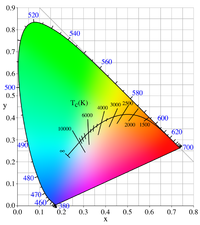
Photo from wikipedia
Near-surface temperatures of permanently shadowed regions (PSRs) on the Moon provide fundamental information for water ice exploration. Seasonal temperature variations of PSRs are found in both Chang’E-2 microwave radiometer data… Click to show full abstract
Near-surface temperatures of permanently shadowed regions (PSRs) on the Moon provide fundamental information for water ice exploration. Seasonal temperature variations of PSRs are found in both Chang’E-2 microwave radiometer data and Diviner Lunar radiometer observations. Furthermore, unusual microwave brightness temperature variations between February 2011 and May 2011 of double-shaded PSRs are shown in the Chang’E-2 observational data, i.e., that the minimum microwave brightness temperature occurs before the time when the infrared brightness temperature reaches the minimum in double-shaded PSRs. To interpret this phenomenon, the 1-D thermal model and the microwave radiation transfer model are used. In the thermal model, the reradiation energy from the illuminated area is estimated by effective solar irradiance, which is an analytic solution for the radiative equilibrium temperature in the shadowed area of a spherical bowl-shaped crater. In the simulation, an assumed internal 0.4 W/m2 heat flow beneath the lunar surface made a plausible fit to the unusual variations during some lunations. However, this is a huge value compared with the well-known heat flow value of about 0.018 W/m2. Furthermore, it is difficult to obtain this extra heat energy by lateral conduction below the surface in a large impact crater due to the small thermal conductivity of the lunar regolith. Finally, the unusual microwave brightness temperature (TB) changes are concluded to be caused by a calibration problem after excluding other possible reasons. In addition, a statistical correction method is applied to revise the problematic TB data to obtain the proper variation trend of the brightness temperature.
Journal Title: IEEE Transactions on Geoscience and Remote Sensing
Year Published: 2022
Link to full text (if available)
Share on Social Media: Sign Up to like & get
recommendations!